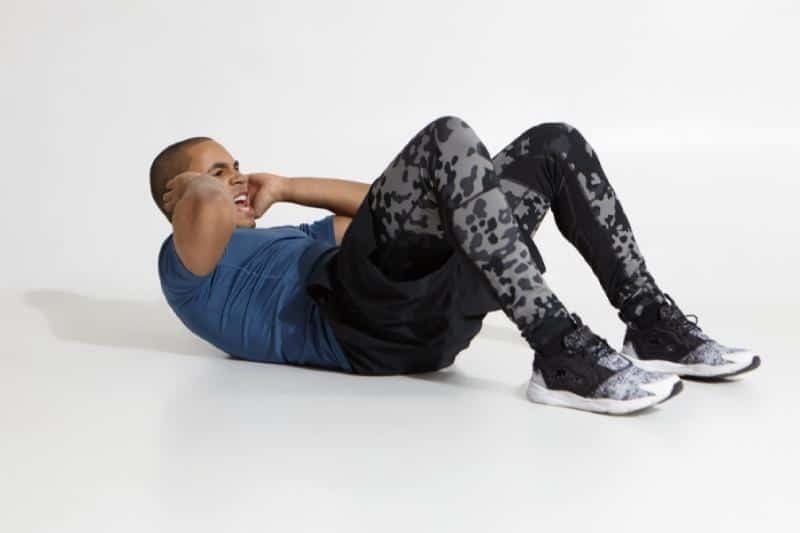Are you using potentially dangerous exercises in your workout? You have to be very careful with strength training equipment because it may not be the most effective or functional option available. How do you know that the exercises you are performing are safe? Found below are some potentially dangerous exercises with suggestions on how they should be done correctly or avoided completely.
Sit-up
Traditional abdominal exercises such as the sit-up, incline sit-up, and hip-raises are exercises that are used to train the obliques and the upper and lower abdominals.
They are performed by first anchoring the feet on an abdominal board, which prevents you from sliding back, then raising your shoulders up toward your feet, tensing your abs at the top of the movement. Slowly lower your shoulders back down and then complete the movement again.
The dangers of performing this movement are the shearing forces on the vertebrae and spinal discs when you have a flexed and rounded spine. In this position, the pressure is mostly placed on a very small area of the disc area, which can cause small ruptures. The safest and most productive way to train the abs is to use the brace and hollow technique. This is a basic isometric exercise that helps strengthen the abs and the muscular girdle around your waist.
Pec Deck
The pec deck is an exercise that trains the chest (pectorals) and shoulder (front deltoid) muscles.
This exercise is performed by sitting at the machine with your back flat against the back pad. Place your forearms on the padded levers and position your upper arms parallel to the ground. Pushing the levers slowly together and squeezing your chest muscles at the end of the movement is the trick. Return slowly to the starting position.
This exercise is potentially dangerous because it places the shoulder into one of its least stable positions, the dislocation position. Because of the extreme position when performing this exercise at the starting position, it can also cause tearing of the ligaments and injury to the rotator cuff tendons.
More effective and less dangerous is the bench press, keeping the arms at shoulder width and exercising in the strongest range of motion (partial reps) and the parallel bar dip with the elbows out.
Behind the neck press
This exercise trains the neck (traps) and shoulder (deltoid) muscles and is performed by placing a loaded barbell on your upper back just above the trap muscle. This exercise is done by standing with your feet about shoulder-width apart. Placing your hands on the bar about three inches wider than the width of your shoulders, pushing the bar overhead to arm’s length, holding it there, and then slowly lowering it back down to your shoulders. This exercise can also be done seated. Try performing it in a smith machine or power rack for added safety. This is an exercise that places the shoulder joint into the dislocation position and the range of motion puts unnecessary stress on the rotator cuff tendons of the shoulders. Many trainees may experience injuries from this behind-the-neck movement. As with before stick with dips and bench presses for your shoulder work.
Dead lift
The dead lift is a compound movement that works the hips and lower back and also exercises the hamstrings and glutes (buttocks). You can perform the dead lift by approaching a loaded barbell and taking a stance about as wide as your shoulders. Grip the bar so that your arms are slightly on the outside of your thighs. Your feet should be pointing straight forward, with your shins about two to three inches from the bar. Heave the load upward using the hips and lower back, keeping the back straight and the bar as close to the shins as possible. At the top of the movement, hold for a few seconds and then lower the bar to the starting position. The exercise has a knock-on growth effect on the whole body when worked hard. The problem with the lift is that if the spine becomes rounded during the lift, it then becomes dangerous. Because of the forces working on the vertebrae and the spine, injuries may occur. A lot of these problems can be solved by keeping the back as straight as possible during the lift and keeping the bar held close to the body during the lift, as the forces are then not that excessive.
Leg extensions
Leg extensions are arguably one of the most popular leg exercises for strengthening the quadriceps (thigh) muscle.
These are done by using a leg extension machine and sitting in the seat with your feet hooked under the padded lever. Raise the weight with your legs until they are pointing straight out in front of you. Hold briefly, and then slowly lower the weight back to the starting position.
Leg extensions are a potentially dangerous exercise because when only the shin is in motion, the exercise draws the patella back onto the femur, increasing joint compression forces, which can damage the connective tissue and the ligaments supporting the knee joint. It can also cause anterior knee pain, so people with existing knee problems may aggravate them by doing this exercise.
For greater safety and equal effectiveness, try doing the squat, leg press, and lunge for safer and more functional use.
Gary is the author of several ebooks, including “Maximum Weight Loss in Ten Weeks” – the complete ebook and time-saving solution for burning away unwanted fat, and “Maximum Weight Gain in Ten Weeks” – easy-to-use and follow techniques that serve as a guide to muscle growth without having to “live in the gym”.









